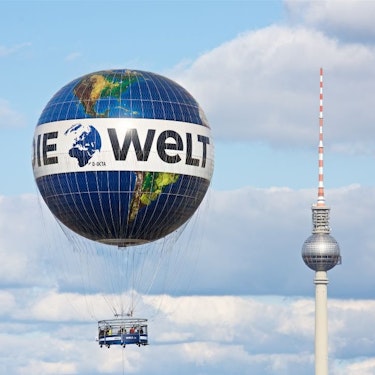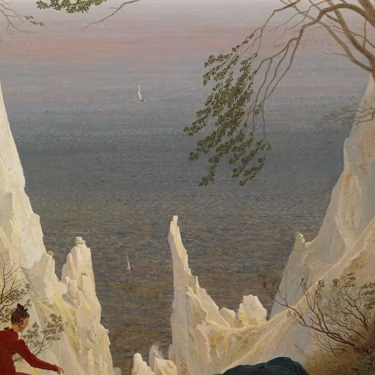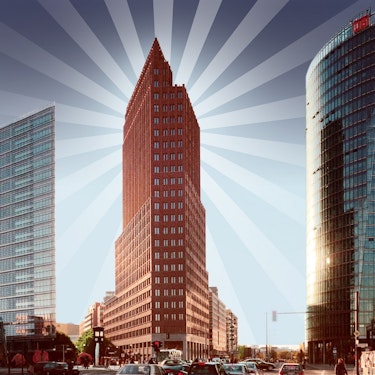More about: Berlin in 3 Days: tips, what to see, and much more
I assure you that it is possible to condense the most important things to see in Berlin into three days. Of course, you'll have a lot of walking to do, but I'm sure that the desire to discover one of the most interesting cities in Europe will win out over your tiredness.
During your visit you will have the opportunity to see Berlin from above, but also from its squares and from its most artistic side. Over the years the city has evolved a lot, but today there are still pieces of the wall, memorials and museums that remind us of its history. My tips and the tour I have prepared are sure to help you. Shall we get started?
Day 1: Take a walk from the Brandenburg Gate to the Cathedral.

On the first day you'll be full of energy, so get ready for a long walk through the centre of Berlin. You'll stop to take in the sights that deserve a more detailed visit, such as the Jewish Memorial or the Parliament, but don't worry, there will also be time to relax on the lawns of one of the city's most beautiful parks.
Cross the Brandenburg Gate
A trip to Berlin has to start by crossing the Brandenburg Gate, as if you were officially entering the city. Without a doubt, this monument is the great symbol, not only because it was one of the old entrance gates, but also because it represents peace.
If you book a guided tour of Berlin, you have a good chance that this will be the starting point. The 26-metre-high construction was inaugurated in 1791, although it has been slightly modified over the years. For example, the Victory Chariot at the top is not the original, as it was destroyed during World War II.
You can cross the Brandenburg Gate and do so via any of the five streets, something that was not possible until 1918. Why? Because the central one could only be used by the royal family and other aristocrats. This place is very popular and shines with splendour, both during the day (because of the sun) and at night (because of the illumination installed).
Climb the dome of the German Bundestag
Once you cross the Brandenburg Gate, head to the German Parliament, the famous Reichstag. Its institutional value is obvious, but also on an architectural level, as it mixes classical elements with a modern dome.
Historic events have taken place here, such as its occupation by workers and soldiers to declare the Weimar Republic in 1918. With the arrival of Hitler and the Nazis to power, the building and everything it represented were unjustly forgotten, to the point that it burned down in 1933. You can, and should, book a tour of the Reichstag dome.
From the top, you can get an incredible view. You will also have an audio guide to listen to the history of the building and the dome, redesigned by Norman Foster in 1956. Admission to the German Parliament is free, but you should book early because it sells out.
Eat in the Tiergarten

Has the dome climb made you sick to your stomach? Head to the Tiergarten, a former hunting ground that is now one of Berlin's largest and most beautiful parks. There you can stroll around its thousands of square kilometres, although my recommendation is to buy some food from a stall nearby and improvise a picnic on the grass.
Before you go, walk around a bit more. There are trails to lose yourself in the lush greenery, either on foot or on a Berlin bike tour. Along the way you'll find streams, which will accompany your walk with their soothing sounds.
Visit the Jewish Monument
You've probably heard of the Jewish Memorial, one of the most solemn places in Berlin. It's a place you'll see if you book a Third Reich tour of Berlin.
The nearly 3,000 concrete blocks that stand there pay homage to the Jews of Europe who were victims of the Holocaust and Nazi terror. The idea of this memorial is to create a kind of labyrinth. You can enter from anywhere and walk between the blocks, which will surround you so that, in some way, you will feel the persecution suffered by the Jewish people.
In this same space is the Information Centre, a set of underground rooms that tell the story of the Jewish extermination. It includes testimonies of people who lived through it and there is also a large room on whose walls the names and short biographies of the victims of the Holocaust have been written.
Walk to the Berlin Cathedral
A half-hour walk will take you to the Berliner Dom, the Berlin Cathedral. Dating from the late 19th century (it was completed in 1905), it is a huge and impressive building. It is in an enviable location, with the river Spree nearby and the large Lustgarten garden preceding it.
From the outside it's already striking, but the inside is even more interesting, so I recommend you buy a ticket (approximately 7€). Like almost every building in Berlin, it had to be rebuilt after World War II.
The Hohenzollern dynasty is buried in the Crypt. Don't miss the climb up to the dome which, although it's a bit tough because there are more than 200 steps to climb, provides a beautiful panoramic view. If you also go up at sunset, you will take some incredible photos. The Cathedral is one of the sights you'll see if you book a Berlin dinner cruise.
Day 2: Discover the art of Berlin's museums and the Old Town

Berlin is one of the great art capitals, there's no arguing with that. If you have any doubts, when you visit one or more of its museums it will be clear to you. Don't worry, on this second day you won't spend the whole time between walls full of paintings and sculptures, but you will also walk through the old streets of the city, discovering emblematic places such as the City Hall.
Visit Berlin's Museum Island
Start the day by touring the halls of some of Berlin's best museums. You will have the opportunity to travel back in time to Egypt, Ancient Greece, the Roman Empire... Although the reason why this is possible is the artistic plundering that the Nazis carried out. In Berlin's museums you will find pieces as important as the Pergamon Altar or several Egyptian mummies.
The good thing is that you won't have to go from one place to another to see everything, as you can get a ticket for the Berlin Museum Island which, located on the banks of the river Spree, is a World Heritage Museum complex.
- New Berlin Museum: the bust of Nefertiti awaits you there, as well as a collection of Egyptian and Oriental artefacts.
- Berlin Old Museum: if you're interested in archaeological excavations and classical antiquities, come on in.
- Bode Museum: Byzantine art has a home in Berlin, and specifically in this museum, which also has a room dedicated solely to numismatics.
- Old National Gallery: here you will only find paintings, but they have been painted by the great artists of European realism.
Head to Nikolaiviertel for a bite to eat
After a morning of visiting Berlin's museums, it's time to stop for lunch. You can book a food tour of Berlin with 10 tastings, or if you don't want to spend too much time, a five-minute walk across the Rathausbrücke will take you to Nikolaiviertel, one of Berlin's best neighbourhoods where you'll find restaurants serving regional food.
You can try a Schweinebraten, the famous pork and beer dish, at one of the local eateries. When you've finished eating, take a stroll around the area, where you'll find the famous Nikolaikirche, Berlin's first church. Another striking building is the Ephraim-Palais, a rococo palace.
See the Berlin City Hall

Known as "the red house", Berlin's City Hall stands out precisely because of its brick façade. It is the workplace of the mayor and the city's senate. When the city was divided during the Cold War, this building remained the town hall of East Berlin. It is not always possible to enter (it is a place of work and official business), but, if you are lucky, you can walk through its three inner courtyards and see inside some of the rooms.
If you want to get there comfortably, you can book a bus tour of Berlin. Inside the "Rotes Rathaus", you can see:
- Busts of famous Berlin personalities, which are displayed in the corridor on the third floor.
- Grand Ballroom, place for ceremonies and institutional receptions.
- Hall of Arms, where all Berlin's emblems are displayed.
End the day at Alexanderplatz
Before ending the day's itinerary, there's one more place you have to see in this area: Alexanderplatz. This square, known to Berliners as 'Alex', was the centre of East Berlin during the Cold War. Today it is still a meeting point and the most important avenues of Berlin start from it. I recommend:
- Book tickets to the Berlin TV Tower, one of the most striking buildings that the GDR erected in the 1960s to demonstrate its power.
- Go to see the World Clock, where the time in all the cities is marked.
- Visit the Fountain of Friendship between Peoples, which is used in summer to cool off.
In addition to its important monuments, Alexanderplatz has a lot of historical value. Here half a million people gathered on 4 November 1989 to call for the end of USSR rule and the fall of the Wall.
Day 3: Enjoy a day trip through Berlin's past and present

The trip is coming to an end, but you can't leave Berlin without taking in its more recent history. You'll have heard a lot about the Nazi era, the war and the subsequent division of the city, but this day will give you a much better understanding of what happened. Shall we get going?
Tour the East Side Gallery
To start the day, I suggest a walk along the banks of the river Spree, along Mühlenstraße. Little by little you'll start to see pieces of the Berlin Wall. Finally, you'll come to the East Side Gallery, where the wall is better preserved and on which graffiti has been painted. Turned into a museum of urban art (the largest in the world), this area is one of the most photographed in Berlin.
All the artists who participated in this gallery wanted to represent through their works the hope and euphoria that came with the fall of the wall. Without a doubt, this is one of the essential visits during your trip to Berlin. And after it, don't hesitate to visit the Wall Museum.
Walk through Kreuzberg's multiculturalism
Kreuzberg used to be an alternative, marginal neighbourhood where squatters, students and artists lived. Since then, however, it has changed and is now part of what is considered the centre of Berlin. It still has a lot of history and culture to wander through. Even today you can still identify two areas, one more gentrified (the west) and the other more bohemian (the east).
But if there is one thing that stands out, it is its multiculturalism. Citizens from all over the world live in this area, especially Turks. In fact, if you go on a Tuesday or Friday you can buy something from the clothes, handicrafts and food stalls in the Türkische Markt
Book a private guided tour of Berlin and visit this unique neighbourhood. One of its most important elements is the art, I recommend you to go to a cultural centre such as:
- Künstlerhaus Bethanien: a former hospital that for years squatters have turned into an alternative gallery.
- Köpi: the punk centre of Berlin and Europe.
See the Gendarmenmarkt and its twin churches
Your next stop is the Gendarmenmarkt- you can't leave Berlin without visiting the twin churches! It is one of the most beautiful places in the city, as it is home not only to the churches but also to the Berlin Konzerthaus.
Why are there two of the same baroque churches on the square? There is a reason: one is French and Huguenot, the other German and Lutheran. You can enter either one (approximately 5 € per ticket), but I don't recommend it; the views from their towers, having already climbed the dome of the Parliament or the Cathedral, won't surprise you.
Between the two churches is Berlin's great concert hall, the Konzerthaus. This building was one of those that suffered the most during the Second World War, as there were rumours that Hitler used to go there a lot, so it was bombed on several occasions. Today it has been refurbished. If you want to get there comfortably , book the Berlin sightseeing bus.
Salute the soldiers at Checkpoint Charlie

You don't know Charlie yet? It is the name of the most important border crossing point used during the division of the city. This is where people from West Berlin could cross into East Berlin, albeit only occasionally and for reasons approved by both governments beforehand. Today, there is a commemorative sign marking that the American sector is being abandoned, as well as photos of the last two soldiers (one from each side) who stood guard.
Here you can also hear stories of people from East Berlin who tried to bypass security to get to the other side and start a new life. Today you can cross from one side to the other without a problem, but there are many photographs and texts to remind you that this was not always the case. Most guided tours of Berlin include this visit. This is the case with the politically incorrect tour of Berlin.
End the day at Potsdamer Platz and take a beer tour
Did you think you'd leave Berlin without seeing Potsdamer Platz? Although you've been to Berlin's past during the day, now it's time to enjoy the more modern side of the city. This square was completely renovated at the end of the 20th century, so it looks completely different from the rest of the city. However, some elements from the past remain, such as the first traffic light in Berlin and in the whole of Europe!
One of the most important buildings here is the Sony Center, imposing with its large glass dome that changes colour all the time. As it will be dark by the time you get there, you'll be able to appreciate the lights better. Take the opportunity to sit down for dinner and a drink on one of the terraces. And to end the day, book a beer tour of Berlin.
An overview of your 3-day tour of Berlin
- Day 1
- Cross the Brandenburg Gate
- Climb the Reichstag Dome
- Visit the Jewish Memorial
- Enter the Berliner Dom
- Day 2
- Visit the Museum Island
- Tour the Nikolaiviertel
- See the Rotes Rathaus
- Discover Alexanderplatz
- Day 3
- See the urban art of the East Side Gallery
- Stroll through Kreuzberg
- See the twin churches of Gendarmenmarkt
- Visit Checkpoint Charlie
- Visit Potsdamerplatz
Sightseeing bus, the best way to get around Berlin

There are many activities and things to do in Berlin. The fact that Berlin has been divided up for so many years has led to different city centres being built up. If you're worried about wasting a lot of time walking from one place to another, but you don't want to take public transport either, you can consider getting around Berlin on a tourist bus, a means of transport to get from one point to another directly and without transfers or long waits. You have several options:
- Berlin Sightseeing Bus, from £29.
- Berlin City Sightseeing Bus City Sightseeing, from £26.
- Berlin Big Bus sightseeing bus, from £26.
In addition, you can opt for a combined ticket such as:
- Berlin Sightseeing Bus with Dungeon Berlin tickets, from £46.
- Berlin bus tour with tickets to Sachsenhausen concentration camp and visit to Potsdam, from £56.
If you're spending three days in Berlin, you're bound to want to see a lot. Walking is an option, but for those longer distances, it's best to take the bus. The downside of public transport lines is that they make a lot of stops in between. However, sightseeing buses are much more convenient because they only stop at the landmarks that are on your route.




